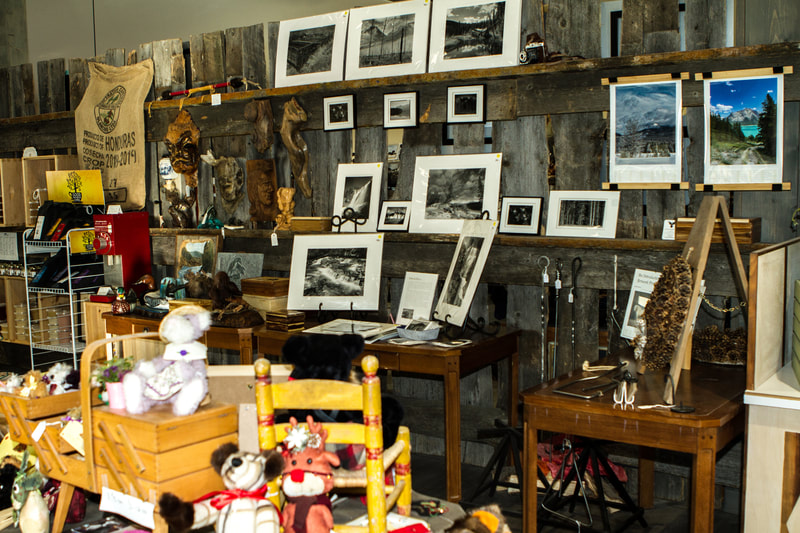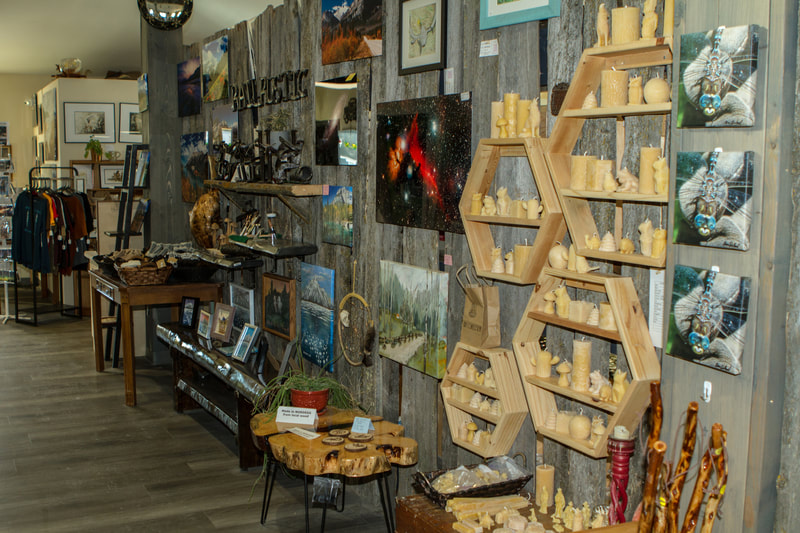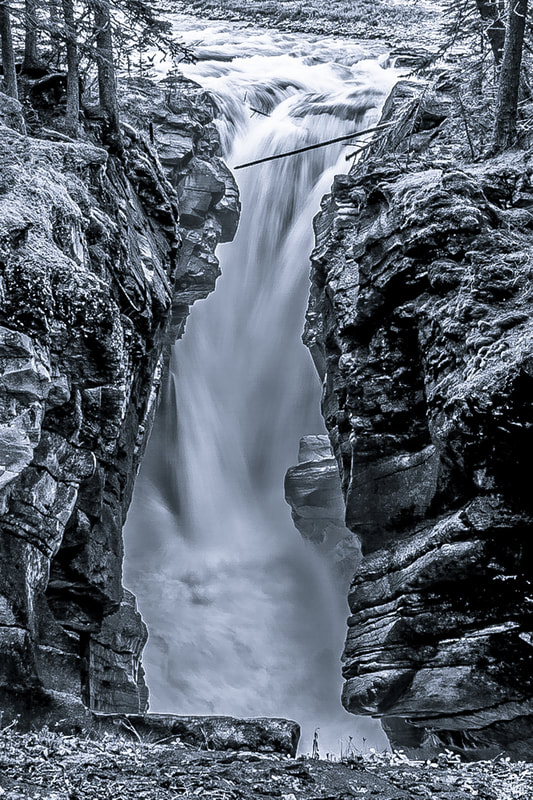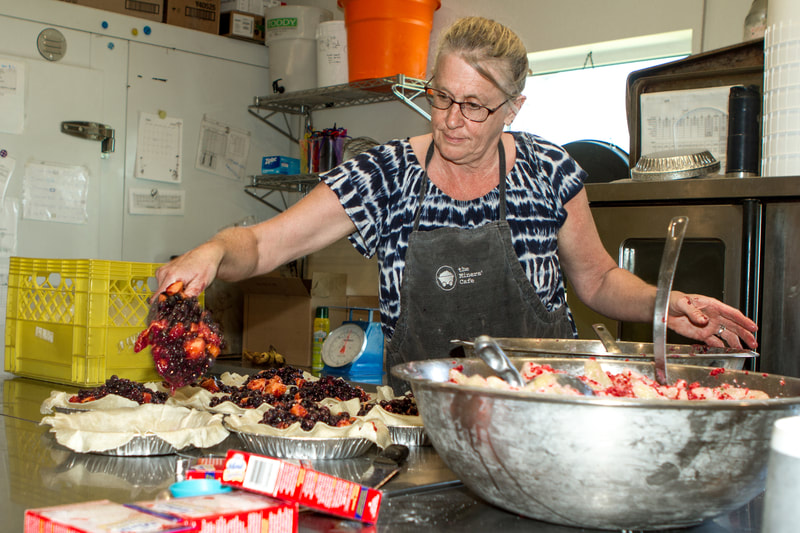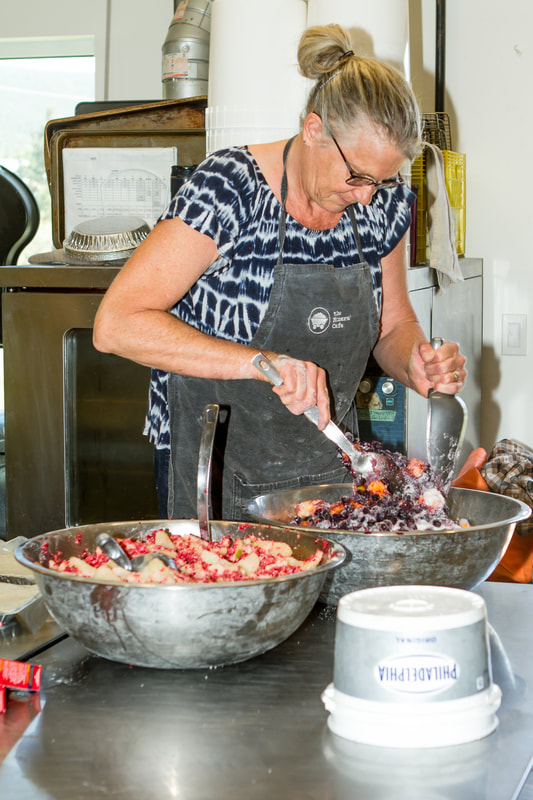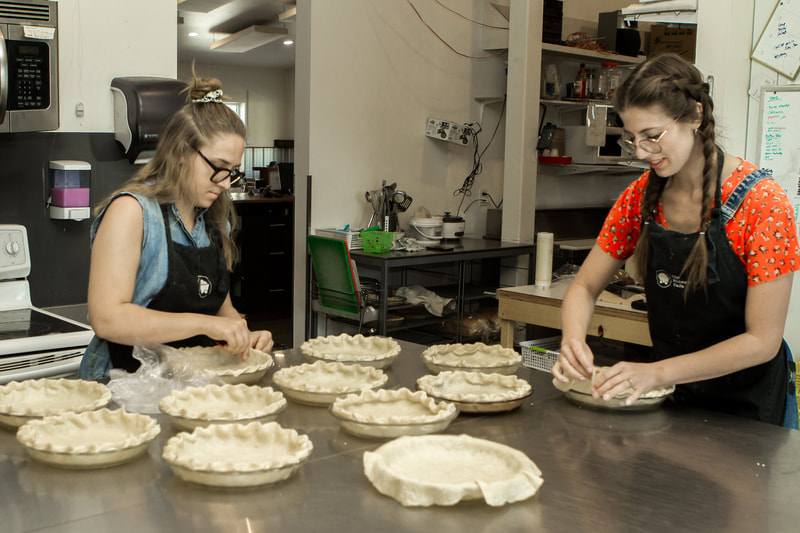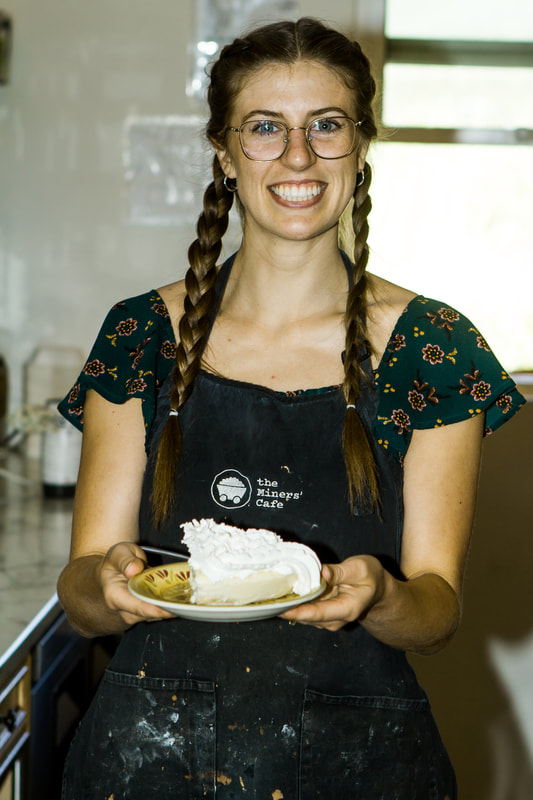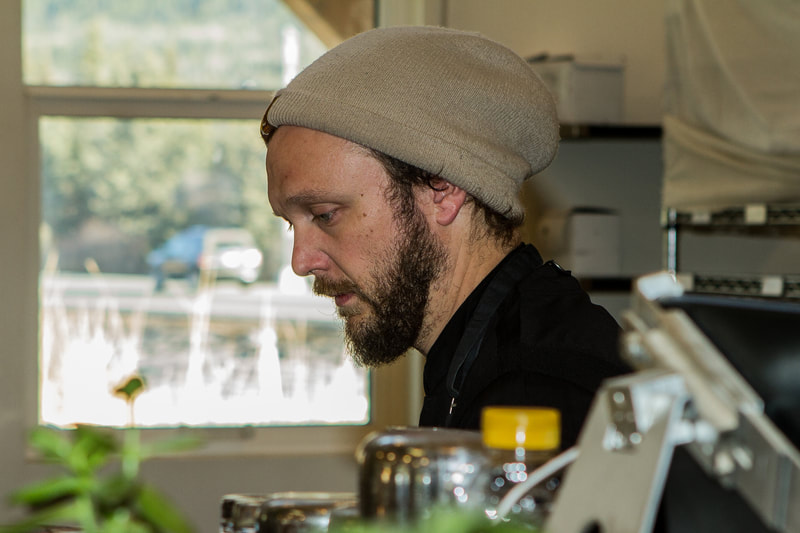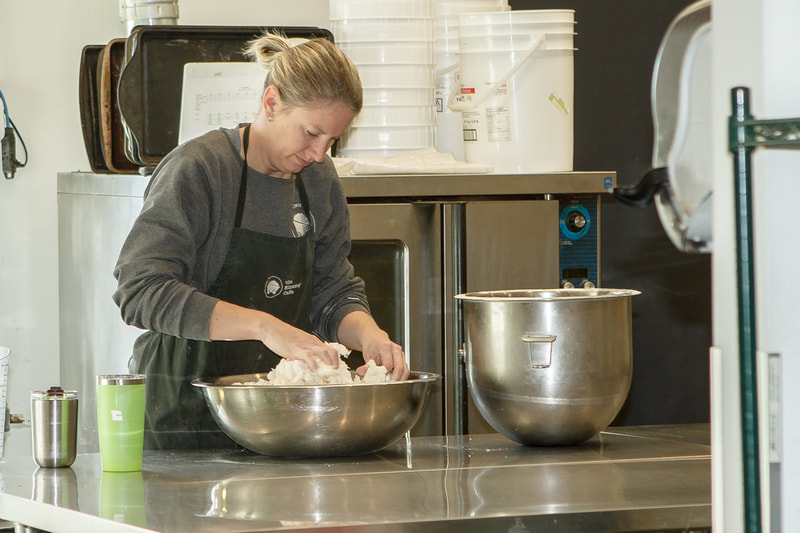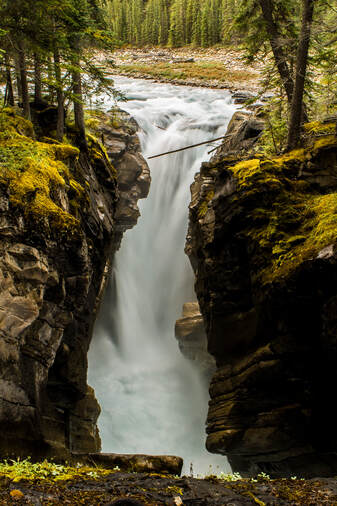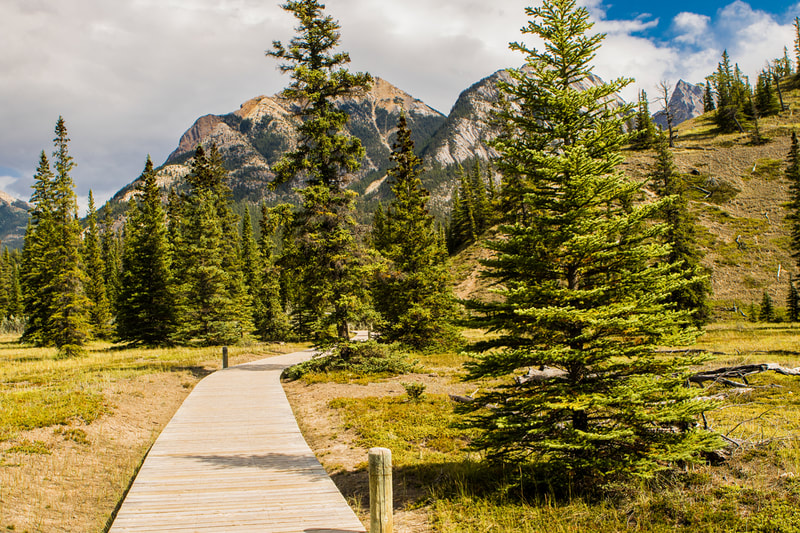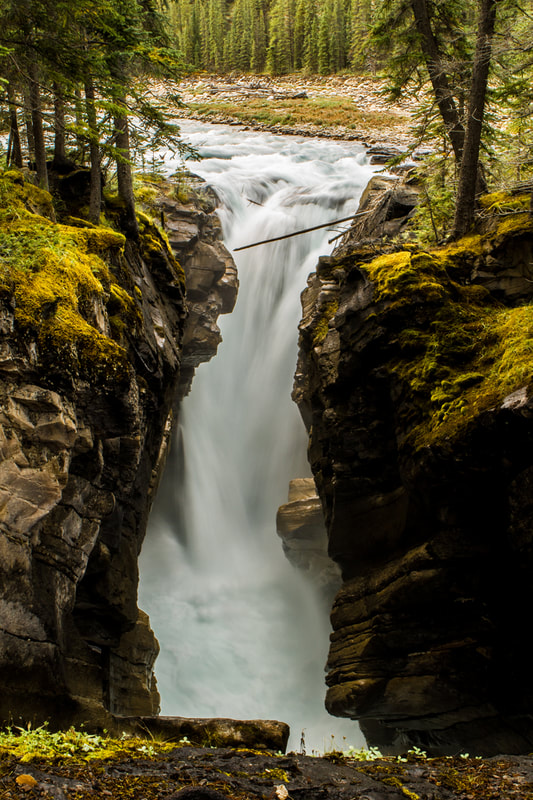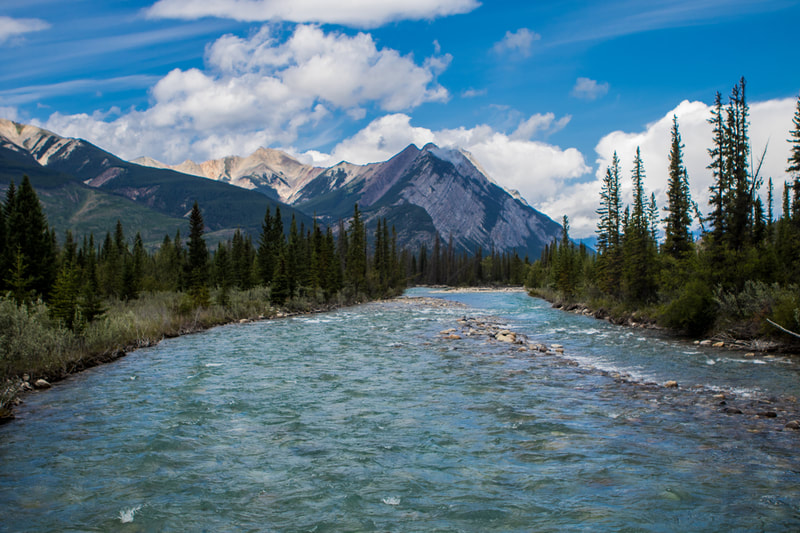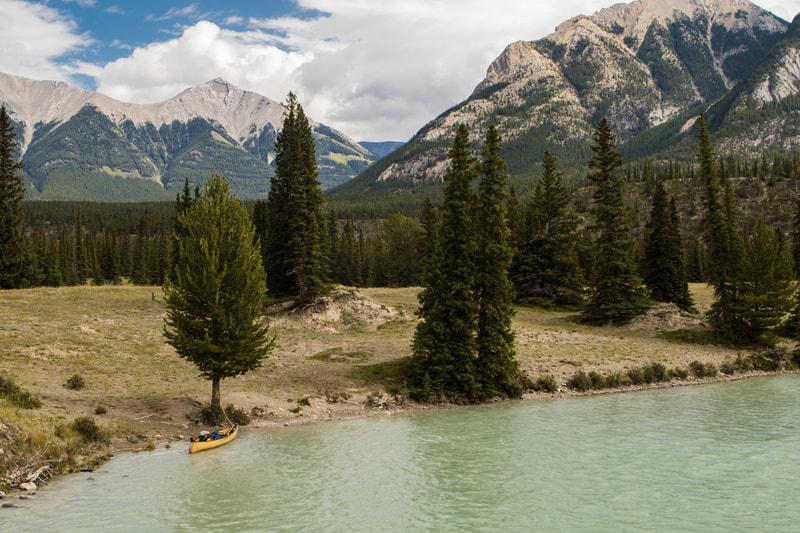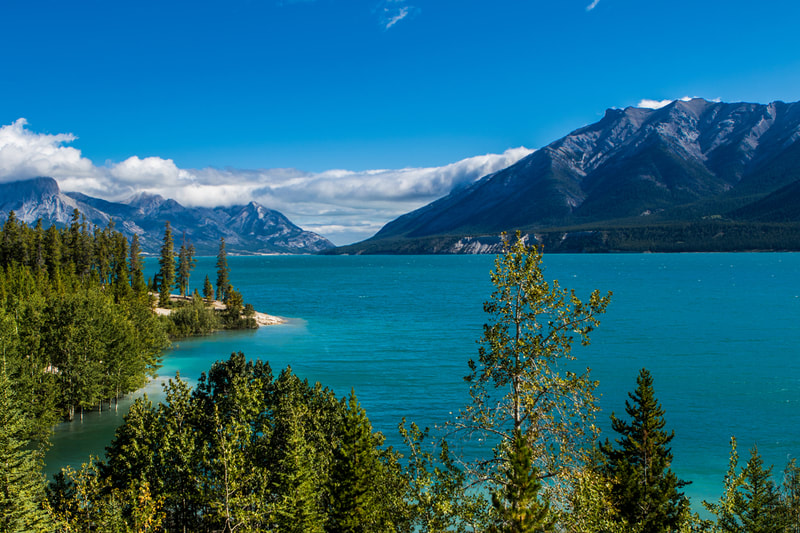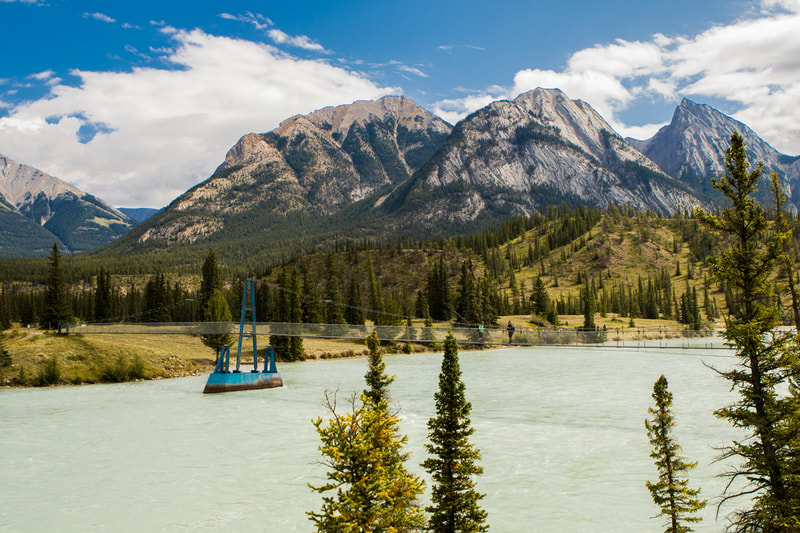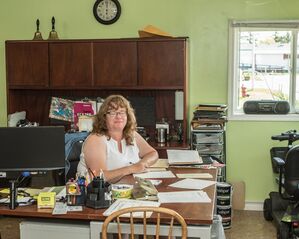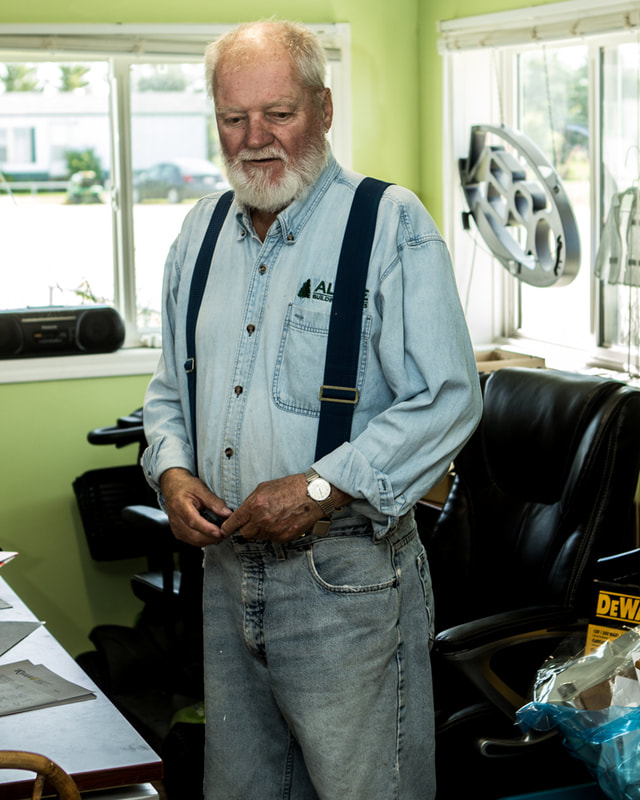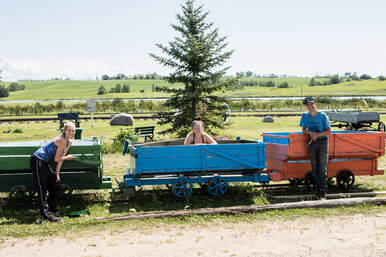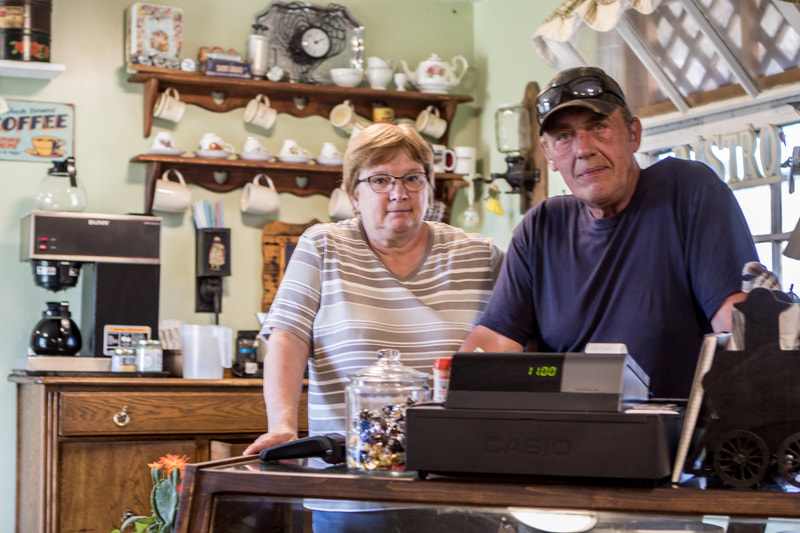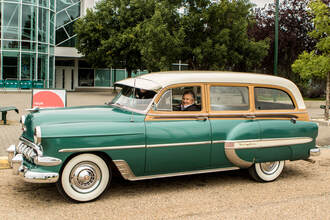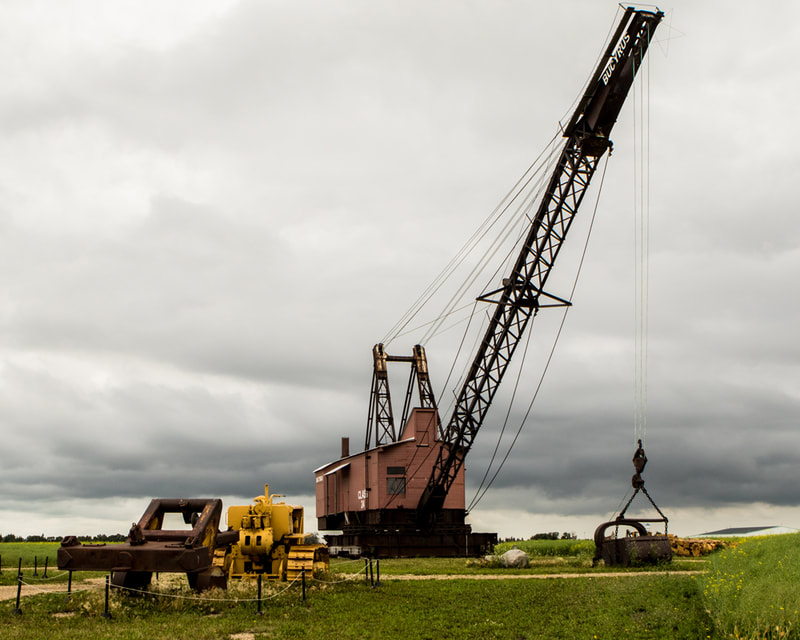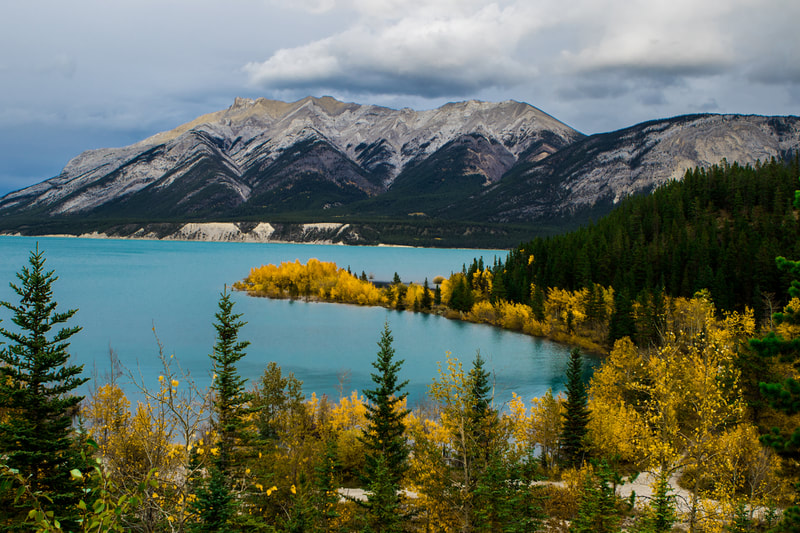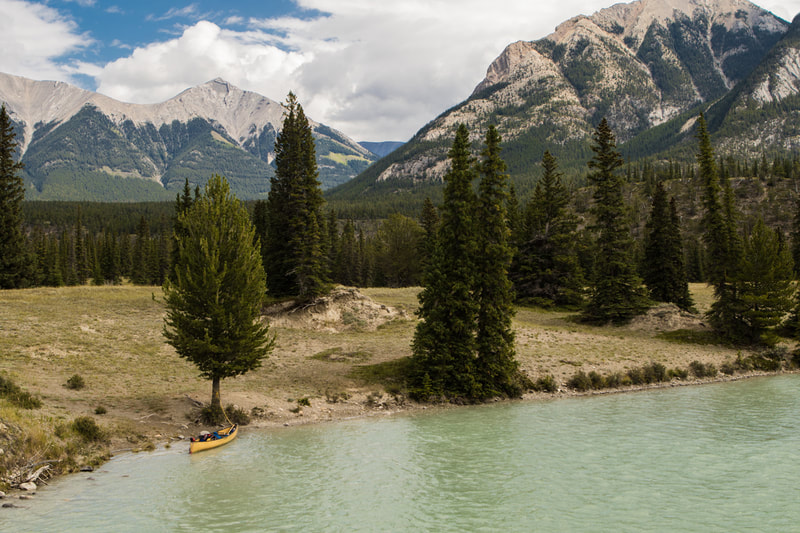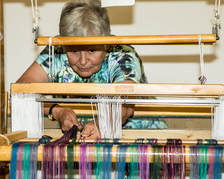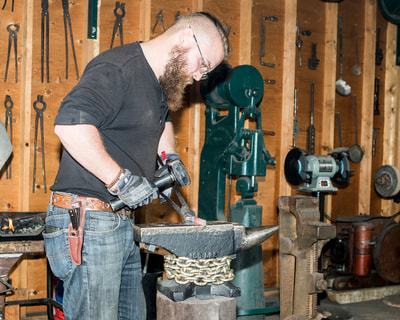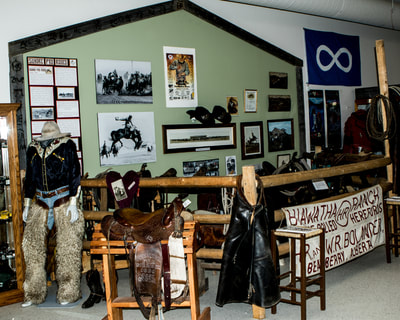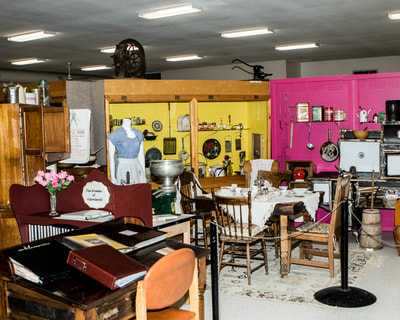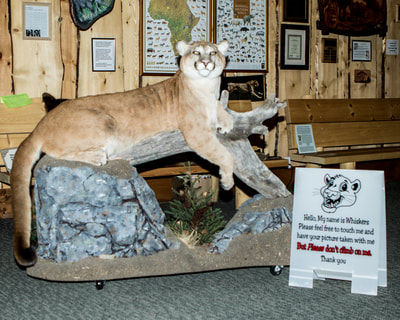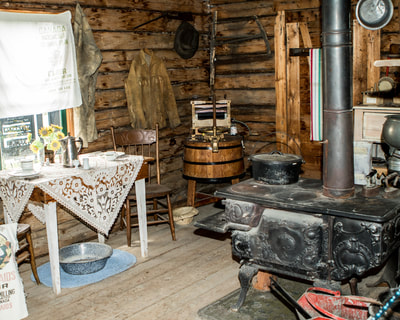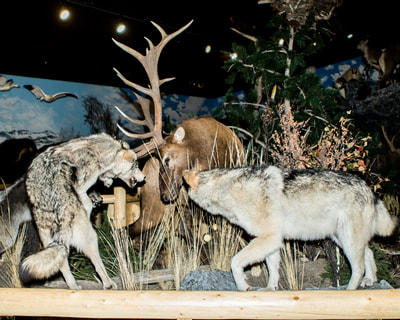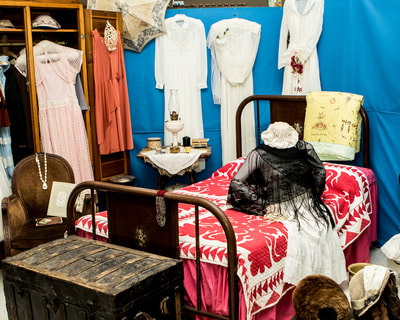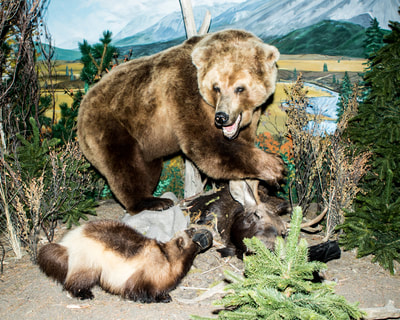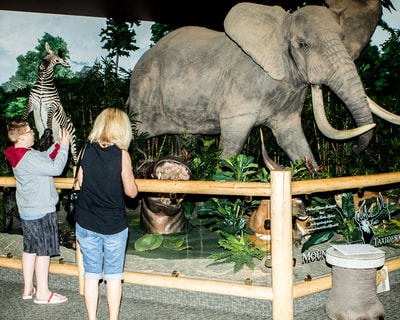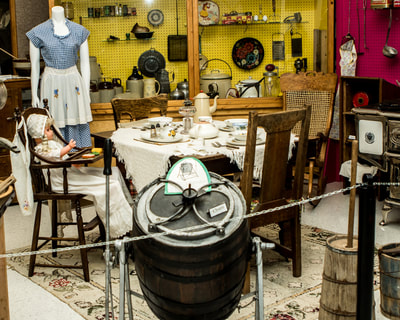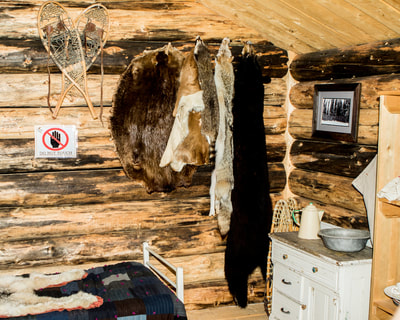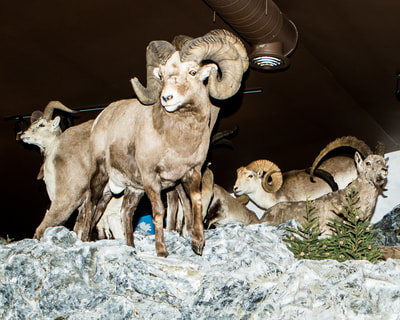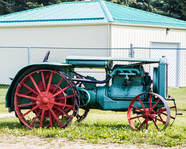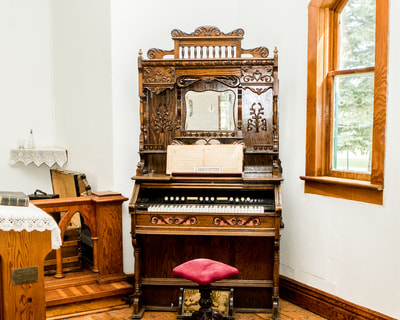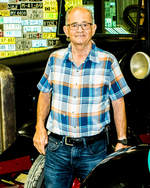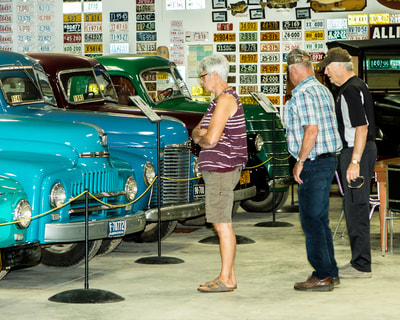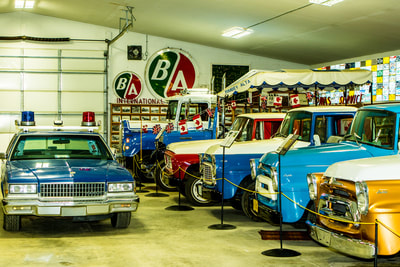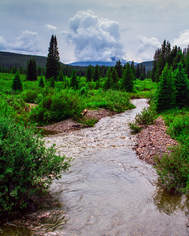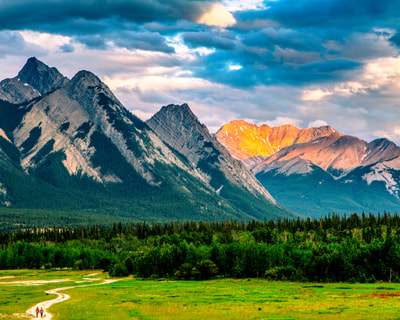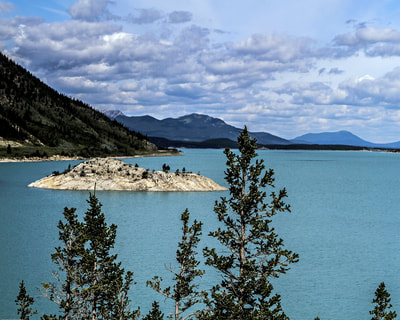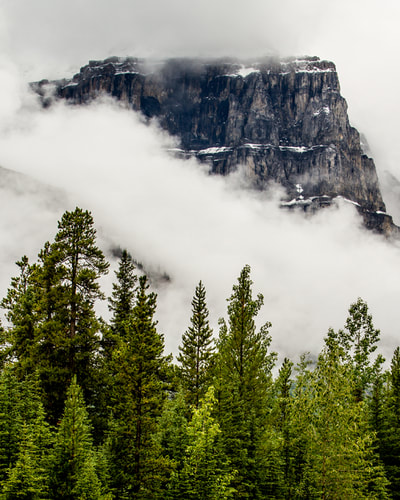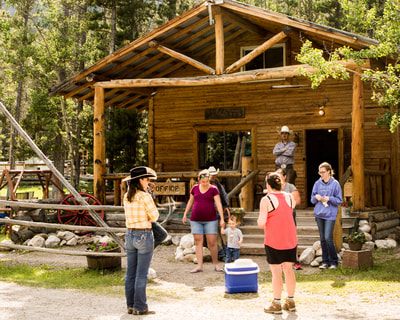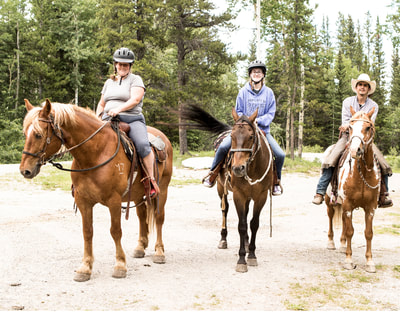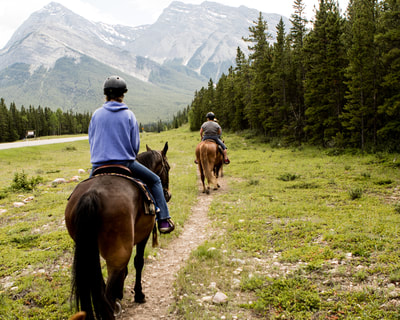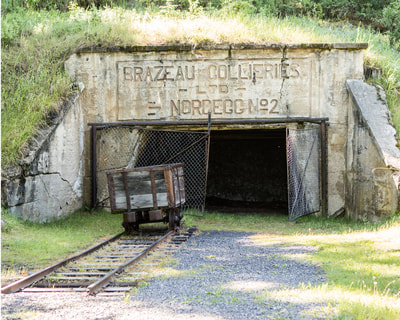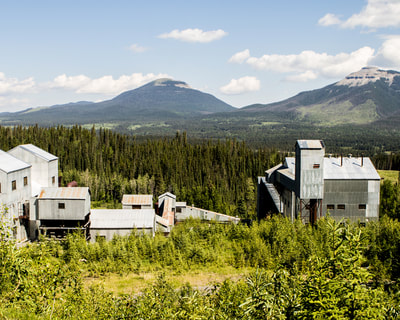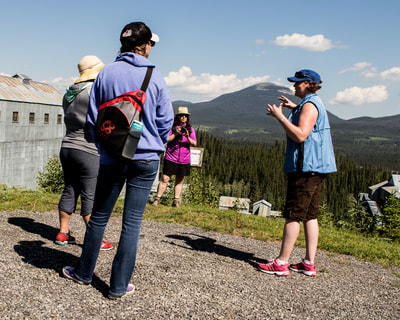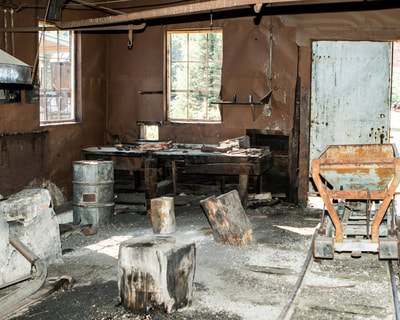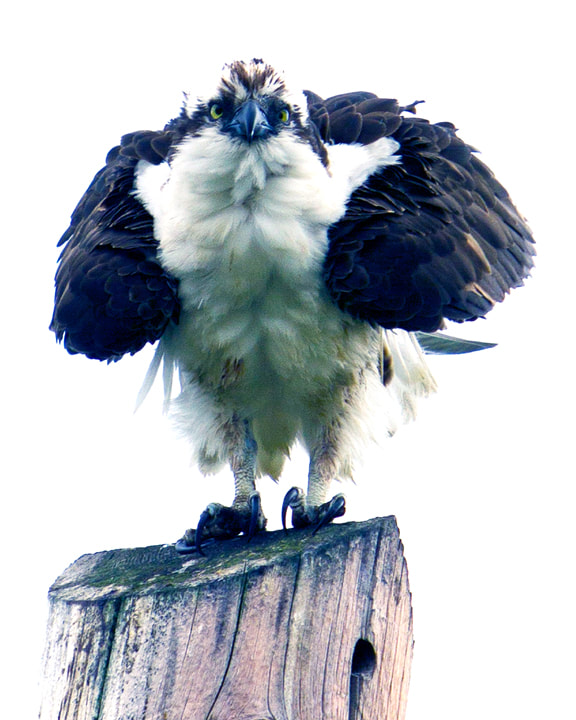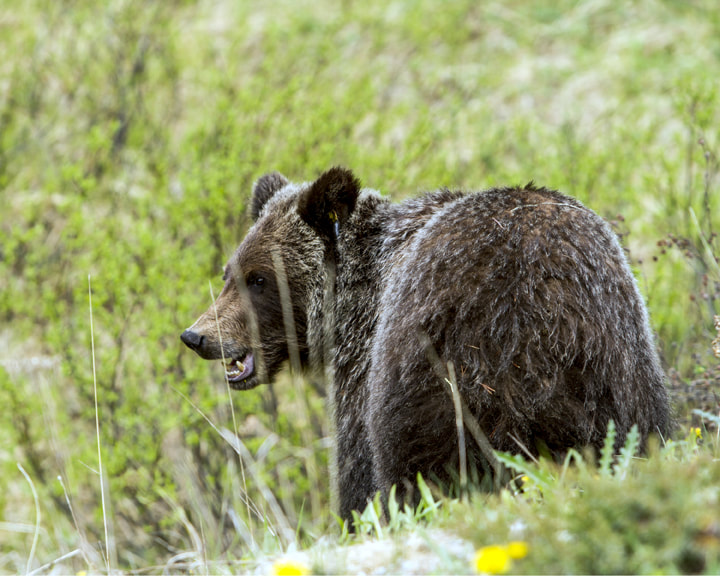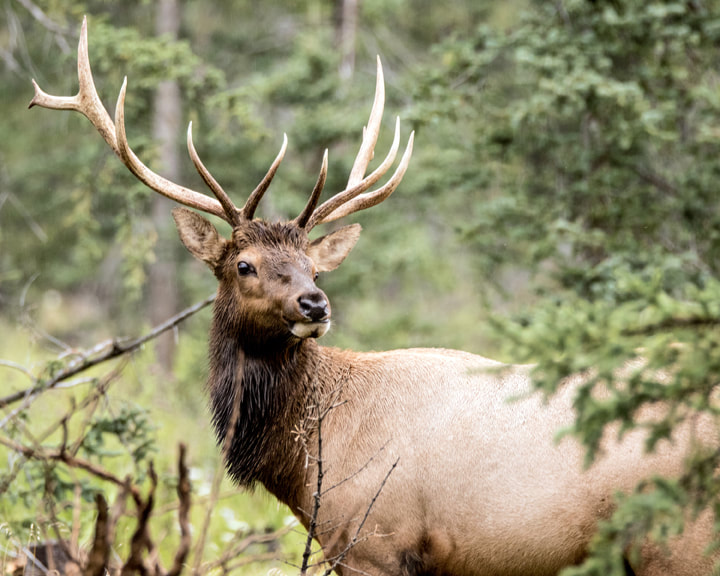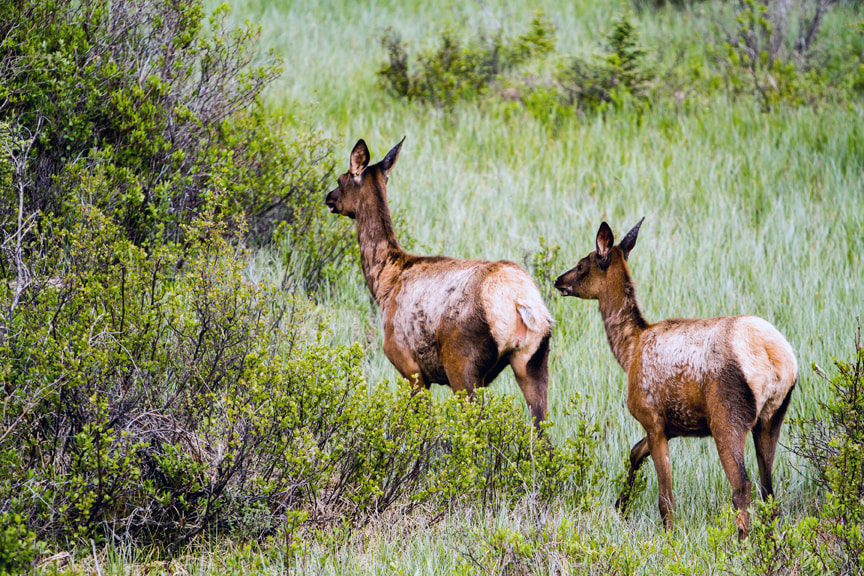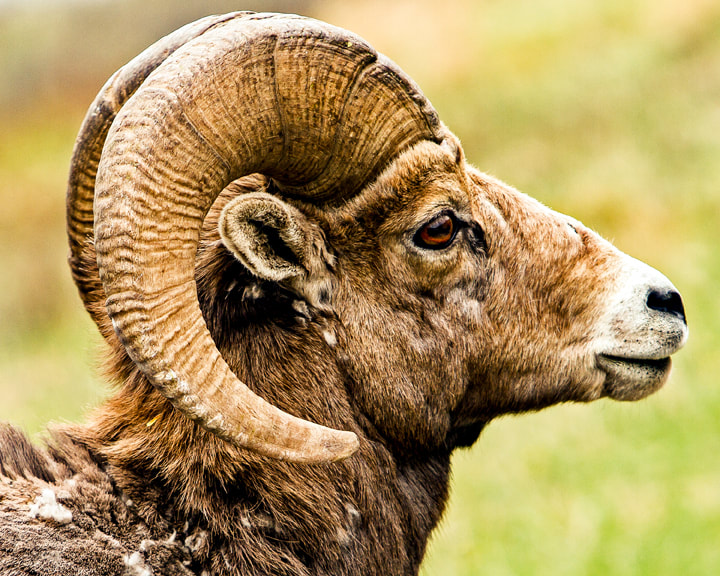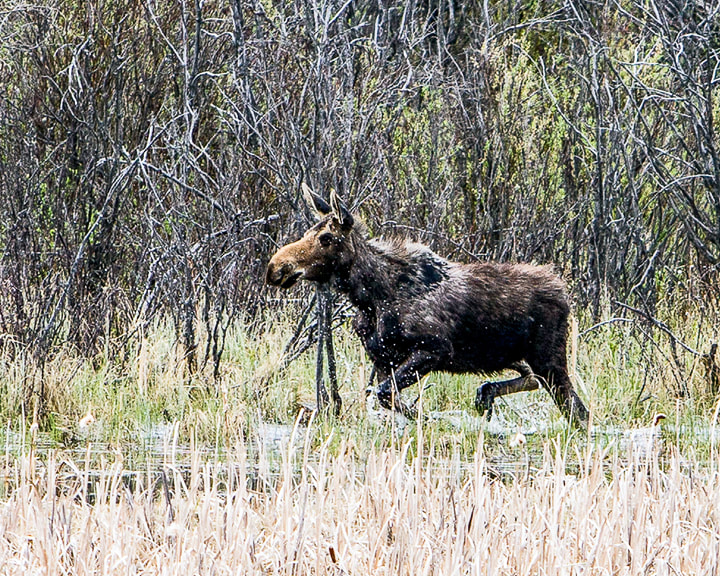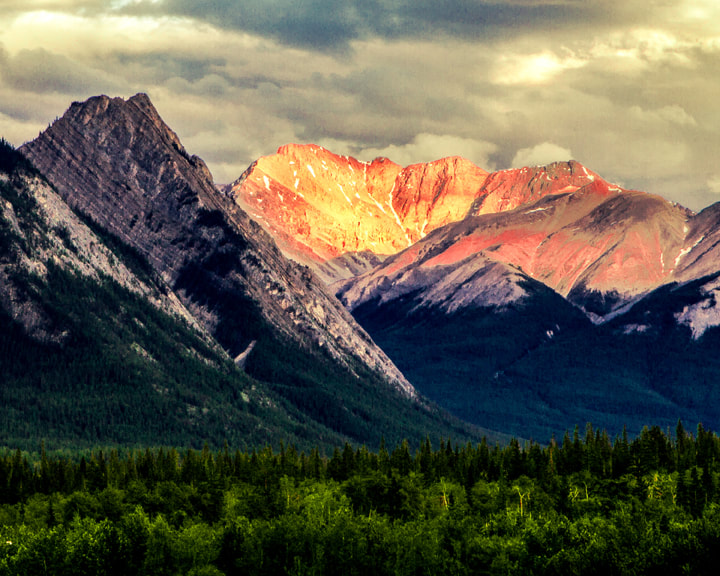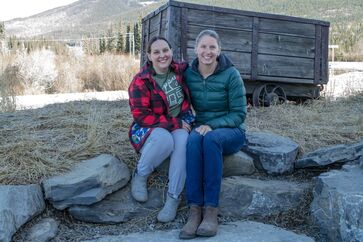
The Beehive Artisans Market
and
The Miners Cafe
Celina Whiteknife, owner of The Beehive Artisans Market and April Feenstra, owner of the Miners Cafe have developed a close and supportive friensdship due to their respective businesses being so closely connected.
and
The Miners Cafe
Celina Whiteknife, owner of The Beehive Artisans Market and April Feenstra, owner of the Miners Cafe have developed a close and supportive friensdship due to their respective businesses being so closely connected.
Nordegg is a small hamlet located in the heart of David Thompson country, 170 km west of Red Deer, AB. on highway 11 and another 92 km further to the Saskatchewan River Crossing in Banff National Park. David Thompson Country has become a popular destination for outdoor enthusiasts over the years offering a multitude of activities such as hiking, horseback riding, fishing and camping, just to name a few. Nordegg is the hub of the area and this onetime booming coal mining community itself has much to offer visitors, whether in the area for a week or two or just enjoying a day trip to the mountains. And, there are two must visit establishments in Nordegg every traveler to the area needs to check out. In fact, these two businesses alone are the main reasons some day trippers make the drive.
The Beehive Artisans Market
Souvenirs, quality artisan creations, books, greeting cards, fresh produce, custom meats and cheeses….all under one roof and in a small hamlet in the Rocky Mountains. Who’da thought. Yet all this and more can be found in Nordegg. You’ll not only be impressed by the selection you’ll also be treated to the exceptional hospitality one would expect in a close-knit and welcoming community.
The place I’m referring to is the Beehive Artisans Market. The Beehive Artisans Market opened its doors in 2021 and is owned and operated by Celina Whiteknife, now a permanent resident of Nordegg. Celina’s parents had purchased a cabin near the Hamlet and for almost 20 years the family spent as much time visiting the area as they could. As noted on the market’s website, everyone in the family fell in love with the area so they decided to stay on permanently and from there, the Beehive Artisans Market evolved.
My first encounter with Celina was when construction of a new building to Nordegg was nearly complete in the spring of 2021. I stopped in to ask what business was going to reside there and she informed me that she would be operating a market featuring only local artisans. Being a frequent visitor to the area myself, I had always envisaged such an establishment in Nordegg, a place where maybe I could present my own work. Sure enough, Celina agreed and my book, The Reluctant Canadian and a collection of my photo note cards are still on her shelves.
My goods aside, the market has grown considerably since opening in May, 2021. Celina carries an impressive array of products including a large selection of books and greeting cards along with the fresh produce and other food items offered. Everything from amazing paintings created from soil-based paints and incredible black and white photographs photographed and printed the old-fashioned way to unique pottery pieces, wax products, clothing, wood and metal products, handbags and wallets……..way too many items to list here. You really need to visit the market to appreciate the quantity and the quality of the merchandise that Celina offers. If you are looking for a functional item for yourself or a unique gift for a friend, you will no doubt find it among the variety of beautifully crafted artisan products in the Beehive Artisans Market.
For more information regarding feature vendors, products and events, check out the market website: beehiveartisansmarket.com
Now, there’s yet more to Celina’s story. If you’re planning a visit to Nordegg and need a comfortable place to call home for a night or a week, she has you covered there as well. Celina also manages the Beehive Bungalows, four recently built bungalows offered as B&B accommodations. The bungalows are located a stone’s throw from the Beehive Artisans Market and right next to the Nordegg golf course.
A closer look at these beautiful bungalows can be viewed at: beehivebungalows.ca
You’ll also note the glowing reviews offered by previous guests.
The Miners Café
It’s all about pie. Well, it’s not all about pie. Afterall it is a café that offers a variety of other delicious foods. So, what is it with the pie? The answer to that question goes back 25 years….or so. That’s about when The Miner’s Café was first established in Nordegg and it immediately became famous for pie, not just to the locals but traveler’s from afar as well. For as long as I have been visiting Nordegg, I stopped at the café on many occasions when it was located at the Nordegg Museum. I recall the kitchen staff were always busy mixing and baking. Today the café is in a new location and the activity in this kitchen is just as hectic and the famous pie is now legendary. So much so that April and her staff need to make 60 plus pies a day during the summer months to keep up with demand. The only problem a visitor might have when ordering a piece is deciding which one to select. The pie menu is extensive and includes a selection of whole fruit pies, whole cream pies, whole pecan pies and of course, gluten and dairy free options. My favorites are two of the cream pies, banana and coconut. Once you’ve tried whatever your flavour, you’ll likely want to purchase a whole pie or two to take home and enjoy with family and friends. New to the pie menu is the meat pie. That’s the one I brought back to Red Deer following my recent weekend visit to Nordegg.
As noted, the café was first established about 25 years ago. Six years ago, ownership changed hands when April Feenstra purchased the café when it was still located at the museum. Thankfully, April chose to continue the tradition of keeping pie front and centre on the menu, likely due to the fact that she has a business background and recognized a good thing. Thanks April. I did mention that the café offers more than pie. Visitors to the café can enjoy everything from hearty soups and stews, sandwiches, specialty drinks, great breakfast items (I’d never had baked oatmeal before….it is delicious), ice cream treats and more.
In 2021, April relocated the business to the new building, coincidently right next to the Beehive Artisans Market (same building). Aside from the great food and of course the pie, the new location offers charming indoor seating and an outdoor patio complete with mountain views.
Check out: minerscafe.ca for more information on menu choices and pie fillings.
In June, 2021, the Beehive Artisans Market and the Miners Café celebrated their grand openings together. I attended to do a book signing and enjoyed sharing the day with the many people from all over Alberta that attended the event. The late Bill Bourne provided the entertainment at the café and later that night performed a concert at the Nordegg Community Centre. Of course he included his song, Pie and Ice Cream in his performance. The weather was great, the people were great and the music was great…..overall a great day.
Because their businesses are so connected, literally, Celina and April have developed a close and supportive friendship. This productive relationship enhances the upbeat ambiance in their respective spaces providing a positive experience for their patrons.
Bottom line. If you’ve never made the trip to the David Thompson Country and Nordegg, take it from me, it’s well worth the drive. This hidden gem has in the past few years become the choice destination for many Albertans and out of province visitors alike.
Check out the links below that will direct you to some of the other attractions to be found in David Thompson Country.
The Beehive Artisans Market
Souvenirs, quality artisan creations, books, greeting cards, fresh produce, custom meats and cheeses….all under one roof and in a small hamlet in the Rocky Mountains. Who’da thought. Yet all this and more can be found in Nordegg. You’ll not only be impressed by the selection you’ll also be treated to the exceptional hospitality one would expect in a close-knit and welcoming community.
The place I’m referring to is the Beehive Artisans Market. The Beehive Artisans Market opened its doors in 2021 and is owned and operated by Celina Whiteknife, now a permanent resident of Nordegg. Celina’s parents had purchased a cabin near the Hamlet and for almost 20 years the family spent as much time visiting the area as they could. As noted on the market’s website, everyone in the family fell in love with the area so they decided to stay on permanently and from there, the Beehive Artisans Market evolved.
My first encounter with Celina was when construction of a new building to Nordegg was nearly complete in the spring of 2021. I stopped in to ask what business was going to reside there and she informed me that she would be operating a market featuring only local artisans. Being a frequent visitor to the area myself, I had always envisaged such an establishment in Nordegg, a place where maybe I could present my own work. Sure enough, Celina agreed and my book, The Reluctant Canadian and a collection of my photo note cards are still on her shelves.
My goods aside, the market has grown considerably since opening in May, 2021. Celina carries an impressive array of products including a large selection of books and greeting cards along with the fresh produce and other food items offered. Everything from amazing paintings created from soil-based paints and incredible black and white photographs photographed and printed the old-fashioned way to unique pottery pieces, wax products, clothing, wood and metal products, handbags and wallets……..way too many items to list here. You really need to visit the market to appreciate the quantity and the quality of the merchandise that Celina offers. If you are looking for a functional item for yourself or a unique gift for a friend, you will no doubt find it among the variety of beautifully crafted artisan products in the Beehive Artisans Market.
For more information regarding feature vendors, products and events, check out the market website: beehiveartisansmarket.com
Now, there’s yet more to Celina’s story. If you’re planning a visit to Nordegg and need a comfortable place to call home for a night or a week, she has you covered there as well. Celina also manages the Beehive Bungalows, four recently built bungalows offered as B&B accommodations. The bungalows are located a stone’s throw from the Beehive Artisans Market and right next to the Nordegg golf course.
A closer look at these beautiful bungalows can be viewed at: beehivebungalows.ca
You’ll also note the glowing reviews offered by previous guests.
The Miners Café
It’s all about pie. Well, it’s not all about pie. Afterall it is a café that offers a variety of other delicious foods. So, what is it with the pie? The answer to that question goes back 25 years….or so. That’s about when The Miner’s Café was first established in Nordegg and it immediately became famous for pie, not just to the locals but traveler’s from afar as well. For as long as I have been visiting Nordegg, I stopped at the café on many occasions when it was located at the Nordegg Museum. I recall the kitchen staff were always busy mixing and baking. Today the café is in a new location and the activity in this kitchen is just as hectic and the famous pie is now legendary. So much so that April and her staff need to make 60 plus pies a day during the summer months to keep up with demand. The only problem a visitor might have when ordering a piece is deciding which one to select. The pie menu is extensive and includes a selection of whole fruit pies, whole cream pies, whole pecan pies and of course, gluten and dairy free options. My favorites are two of the cream pies, banana and coconut. Once you’ve tried whatever your flavour, you’ll likely want to purchase a whole pie or two to take home and enjoy with family and friends. New to the pie menu is the meat pie. That’s the one I brought back to Red Deer following my recent weekend visit to Nordegg.
As noted, the café was first established about 25 years ago. Six years ago, ownership changed hands when April Feenstra purchased the café when it was still located at the museum. Thankfully, April chose to continue the tradition of keeping pie front and centre on the menu, likely due to the fact that she has a business background and recognized a good thing. Thanks April. I did mention that the café offers more than pie. Visitors to the café can enjoy everything from hearty soups and stews, sandwiches, specialty drinks, great breakfast items (I’d never had baked oatmeal before….it is delicious), ice cream treats and more.
In 2021, April relocated the business to the new building, coincidently right next to the Beehive Artisans Market (same building). Aside from the great food and of course the pie, the new location offers charming indoor seating and an outdoor patio complete with mountain views.
Check out: minerscafe.ca for more information on menu choices and pie fillings.
In June, 2021, the Beehive Artisans Market and the Miners Café celebrated their grand openings together. I attended to do a book signing and enjoyed sharing the day with the many people from all over Alberta that attended the event. The late Bill Bourne provided the entertainment at the café and later that night performed a concert at the Nordegg Community Centre. Of course he included his song, Pie and Ice Cream in his performance. The weather was great, the people were great and the music was great…..overall a great day.
Because their businesses are so connected, literally, Celina and April have developed a close and supportive friendship. This productive relationship enhances the upbeat ambiance in their respective spaces providing a positive experience for their patrons.
Bottom line. If you’ve never made the trip to the David Thompson Country and Nordegg, take it from me, it’s well worth the drive. This hidden gem has in the past few years become the choice destination for many Albertans and out of province visitors alike.
Check out the links below that will direct you to some of the other attractions to be found in David Thompson Country.
